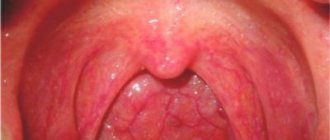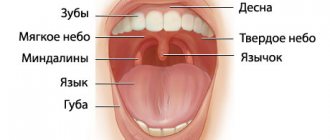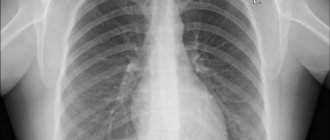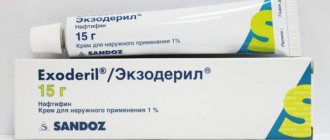Enlarged tonsils in a child are not a disease, but a symptom that signals pathological changes occurring in the young body. As practice shows, parents go to the doctor only if the baby’s body temperature increases, since it is believed that temperature is the only significant signal indicating that the child is sick. And this is a big mistake. The condition when one tonsil is larger than the other, or both are enlarged at once, can occur without fever or sore throat. And it also requires increased attention from parents.
Why do tonsils get enlarged? Tonsils are special organs of the immune system in the human nasopharynx. They consist of lymphoid tissue, protect the body from pathogens and prevent their further spread. The leading role in the body belongs to the palatine tonsils, or tonsils. The tonsils are located on the sides of the pharynx and meet infection that has entered through inhaled air or food. As soon as viruses and bacteria come into contact with the surface of the tonsils, the child's tonsils enlarge. At this time, there is an increased production of leukocytes - cells that attack and destroy the infection. When an enemy is defeated, the tonsils return to their original size. In other words, the large size of the palatine tonsils indicates that they are fighting pathogenic microflora.
But even when the tonsils are in a healthy state, it is important not to lose vigilance: normally, every person has bacteria on their mucous membranes that do not manifest themselves in any way, but under the influence of favorable conditions, they begin to multiply, provoking hypertrophy of the tonsils. These reasons for enlarged tonsils in children include:
- hypothermia;
- allergic reactions;
- deviated nasal septum;
- chronic diseases of the ENT organs;
- too dry air;
- living in a place with an unfavorable environment.
Symptoms:
- red, swollen tonsils with white or yellowish coating or streaks;
- a sore throat;
- difficult and/or painful to swallow;
- fever (temperature above 38.0);
- cervical lymph nodes are enlarged;
- hoarse or hoarse voice;
- headache;
- stiff neck muscles;
- abdominal pain (especially in young children).
In infants:
- drooling due to pain in swallowing;
- anxiety;
- refusal to eat
- With chronic tonsillitis, your breath may smell bad.
The meaning of the palatine tonsils
Before you think about performing an operation on an adult or child, you need to understand that nature does not create anything for nothing. And our tonsils are no exception. The tonsils are by no means a useless organ, the removal of which will pass without leaving a trace.
The palatine tonsils, despite their small size, are a powerful barrier that protects our body from viruses and bacteria. They consist of lymphoid tissue. When an infection gets on the surface of the tonsils, they begin to intensively produce leukocytes that kill pathogenic organisms. Then the defeated infection, along with the dead leukocytes, is excreted. This is how a healthy amygdala works.
External causes and weakened immunity reduce the protective properties of the tonsils. The tonsils of an adult or child stop coping; pathogenic microflora settles in their lacunae, maintaining constant inflammation in them. This is how chronic tonsillitis develops.
Pus plugs that appear on the surface of the tonsils are nothing more than a compressed infection.
This condition must be treated without fail. And surgery is only the most extreme option.
Complications of tonsillitis
- Labored breathing.
- Sleep apnea (holding your breath during sleep).
- Spread of infection to the tissue near the tonsils (peritonsillitis), peritonsillar abscess - accumulation of pus behind the tonsil.
- Acute cervical lymphadenitis is inflammation of the cervical lymph nodes.
Streptococcal tonsillitis can cause complications such as:
- acute rheumatic fever, affecting the joints, heart and other organs;
- glomerulonephritis (inflammation of the kidneys, which can lead to serious consequences, including kidney failure).
Treatment with antibiotics significantly reduces the likelihood of complications after streptococcal sore throat.
Causes of chronic inflammation of the tonsils
Inflammation in the tonsils in an adult or child is caused by streptococcus and staphylococcus bacteria, which begin to actively multiply and take root in the lacunae of the tonsils, poisoning the body with the products of their vital activity.
The causes of infection entering the tonsils may be:
- past infectious diseases;
- chronic diseases of the nose and paranasal sinuses (rhinitis, sinusitis);
- pharyngitis;
- dental diseases (caries);
- deviated nasal septum;
- nasal polyps;
- overgrown adenoid vegetations in a child;
- stress;
- allergic reactions;
- reduced immunity.
One of the most common causes of chronic inflammation is improperly treated or undertreated acute tonsillitis - a sore throat we all know.
Therefore, it is extremely important to begin treating the disease in the early stages, and treatment of tonsils in adults and children should initially be carried out by a competent otolaryngologist.
Diagnosis of tonsillitis
- For tonsillitis, the doctor will examine the child's throat, as well as his ears and nose, where there may also be inflammation.
- The doctor will examine the child's skin, since streptococcal sore throat sometimes causes a specific rash. This is what is called “scarlet fever” - it is not some kind of separate disease, but a sign of damage to the body by streptococcus.
- The doctor will feel the cervical lymph nodes - as a rule, with tonsillitis they swell.
- The doctor will feel the spleen to distinguish a sore throat from mononucleosis, which also causes swollen lymph nodes.
- The streptococcal test is a simple and accurate way to distinguish streptococcal tonsillitis from viral tonsillitis. The doctor takes a scraping from the child’s throat and within 24-48 hours the result is ready.
- In some cases, a general blood test may be needed, the results of which can also indicate the viral or bacterial nature of the disease. It is usually taken if the streptococcal test is negative, but the course of the disease leaves the doctor in doubt.
About the clinic
Euromed Clinic is a multidisciplinary family clinic in the center of St. Petersburg.
- Calling a doctor to your home
- 24/7 therapist appointment
- Tests, ultrasound, x-ray
- Whole body diagnostics
- Hospital and surgery
- Vaccination
Find out more about the clinic
Hypertrophy of the palatine tonsils in children
The growth of the palatine tonsils most often occurs in childhood - during the period of active tissue construction and adaptation of the body to its environment. As the body ages, the tonsils gradually decrease in size.
There are cases when the tonsils are enlarged from birth. But most often, their intensive growth serves as a response to increased inflammation of both the tonsils themselves (called tonsillitis or tonsillitis) and neighboring organs. Inflammation develops when:
- frequent infectious diseases;
- allergies;
- irritation of the mucous membrane by chemical or thermal factors.
The tonsils are located on the sides of the pharynx. If they increase slightly, the child does not experience any discomfort (hypertrophy of the tonsils and their inflammation are not the same thing) and does not need treatment. Moreover, with the onset of puberty, their reverse development begins. If they reach a large size and block the lumen of the pharynx, then characteristic signs appear:
- difficulty breathing (especially with a combined enlargement of the nasopharyngeal tonsil - adenoids);
- violation of diction;
- problems swallowing food;
- night cough;
- the child may snore and wake up frequently, and a chronically sleep-deprived baby will behave restlessly during the day.
Treatment of tonsillitis
The child should be provided with:
- peace and the opportunity to sleep as much as he wants;
- Drink plenty of fluids to relieve sore throats and prevent dehydration;
- air humidification;
- a sore throat can be relieved by both warm drinks and cold ice cream, especially popsicles;
- for a sore throat, it helps to gargle with a solution of table salt and soda - a teaspoon of salt and a small pinch of soda per 250 ml of warm water;
- Children over 4 years old can be offered lozenges for sore throats. Do not give candy to small children - they may choke;
- do not smoke when your child is sick, avoid strong odors that irritate the throat;
- A sore throat and fever can be relieved by medications containing paracetamol and ibuprofen. Don't give children aspirin; in rare cases, it can cause deadly Reye's syndrome.
Confirmed bacterial tonsillitis (usually streptococcal tonsillitis) is treated with antibiotics. It is dangerous to interrupt or stop the course because it increases the likelihood of infection spreading to the joints, heart, kidneys and other organs. Continue taking antibiotics even if your symptoms are completely gone.
Surgery to remove tonsils
The importance of the tonsils cannot be underestimated. We found this out at the very beginning of the article. The main goal of any therapy is to try to reduce the tonsils without surgery and preserve them as an organ of the immune system. Many adult patients mistakenly believe that they will have less pain after surgery. It is a myth! Yes, the tonsils will stop bothering you. But now the infection from the outside will enter the pharynx and further into the respiratory tract without encountering any obstacle, which will not have the best effect on the incidence of respiratory tract diseases.
The operation to remove the tonsils is called tonsillectomy.
Certain indications are required for the operation. The patient's fatigue due to frequent exacerbations and unpleasant symptoms is not such an indication.
Surgical intervention is prescribed in the following cases:
- recurrence of sore throats more than four times throughout the year;
- a peritonsillar abscess that has occurred;
- poor performance of rheumatic tests;
- complications on other organs and systems of the patient.
Before deciding to undergo surgery, it is necessary to try to treat a child or adult patient conservatively, that is, to reduce the tonsils without surgery.
Prevention
It is important to live in favorable conditions, keeping the room clean, maintaining a normal level of air humidity and a temperature comfortable for the human body. Nutrition must be correct for the immune system to be active. In autumn and winter, you need to dress according to the weather, not breathe through your mouth, so that the tonsils are not exposed to icy air.
To maintain immunity, hardening, spa treatment, and additional courses of minerals and vitamins may be important. Respiratory and any other diseases must be treated on time so that they do not become chronic.
Diagnostics
An experienced doctor pays attention to the facial expression of a small patient. It is important to interview parents, and, if possible, the child himself, to identify the main complaints. The history may indicate such points as low immune defense of the body, respiratory diseases (several per year), and a stuffy nose for a long time. Laboratory tests are important to determine the diagnosis. It is necessary to identify the pathogen and check its response to commonly used medications. The patient is prescribed bacterial culture from the throat.
The patient's blood must be taken for analysis, including acid-base balance, and urine must be taken for analysis to detect inflammation. Instrumental diagnostic methods are also relevant when diagnosing tonsil hyperplasia. Ultrasound diagnostics of the pharynx, pharyngoscopy, fibroendoscopy and rigid endoscopy are performed.
Tonsil hyperplasia can be caused (must be taken into account when diagnosing):
- cancer in the tonsils
- tuberculosis
- granulomas of the pharynx of an infectious nature
- leukemia
- lymphogranulomatosis
2. Reasons
The connection between hypertrophy of the tonsils and frequent acute respiratory viral infections, tonsillitis, laryngitis and other infectious and inflammatory diseases of the ENT organs has been reliably established. In addition, many sources indicate a higher frequency of such hypertrophies in children with weakened immunity, regardless of the reasons. Finally, a combination of hypertrophied tonsils with adenoids is constantly encountered - a hyperplastic growth of another tonsil, the nasopharyngeal; according to a number of experts, this indicates the commonality of hyperplastic and hypertrophic processes for the entire lymphadenoid ring.
Hence the conclusion is drawn about the compensatory, reactive nature of hypertrophy of the tonsils: in this case, organs that are very often and intensively used and/or cannot cope (with weakened local and general immunity) with their functions increase.
However, the etiopathogenesis of tonsil hypertrophy still remains controversial and is being actively studied by specialists in this field.
Risk factors usually include hypovitaminosis, insufficient and unbalanced nutrition, harmful environmental factors, and endocrine disorders.
Visit our Otolaryngology (ENT) page
Treatment
If there are complaints of difficulty swallowing and breathing, cough, or speech disorders, it is recommended to partially remove the tonsils (tonsillotomy) when the child reaches 5-7 years of age.
But such an operation has the following contraindications: acute infectious diseases, blood diseases, diphtheria bacilli carriage. Tonsillotomy is not recommended for polio outbreaks. ENT surgery can be performed on an outpatient or inpatient basis, both under anesthesia and local anesthesia. It is not uncommon to perform a bilateral tonsillectomy - complete removal of the tonsils.
3. Symptoms and diagnosis
It should be especially emphasized that hypertrophy itself is not an inflammatory process and should not be perceived as equivalent to tonsillitis (acute or chronic inflammation of the tonsils). Until the tonsils reach a certain size, a person may not experience any discomfort at all.
However, over time, the anomaly begins to affect itself and takes on an increasingly distinct pathological character, simultaneously causing a cascade of progressive disorders and changes in the ENT organs.
Diction is impaired, speech becomes nasal, nasal breathing becomes difficult, which may become impossible in the future. As a result, the patient is forced to constantly breathe through his mouth, which in a few years, and even faster during periods of rapid growth, can significantly change the maxillofacial proportions (“adenoid face”). With further growth of the tonsils, the pharyngeal outlet of the auditory tube is blocked and hearing loss gradually increases, swallowing becomes difficult, bad breath appears, and the patient loses body weight.
Inadequate breathing leads to chronic hypoxia; the result is fatigue, emotional instability, and decreased intellectual and mental productivity. Sleep becomes disturbed, restless and often interrupted, a tendency to snore appears and intensifies, episodes of night cough and apnea (complete cessation of breathing, sometimes for tens of seconds) may occur. The patient does not get enough sleep, and the above disorders progress in a vicious circle.
As can be seen from the above, hypertrophy of the tonsils is by no means an asymptomatic and harmless process; on the contrary, it creates combined and quite serious threats to health, and not only in the otorhinolaryngological field.
Diagnosing this situation is quite simple: a history and complaints are collected, a standard examination of the ENT organs is carried out using spatulas, dilators and mirrors. A clinical blood test is prescribed, which in this case has its own correlates of hypertrophy, in contrast to the biochemical picture of other diseases. X-ray or tomographic imaging is used as needed.
A differential diagnosis must be carried out between “pure” hypertrophy and the hypertrophic variant of chronic tonsillitis, tumor processes, etc.
About our clinic Chistye Prudy metro station Medintercom page!
When should you have your tonsils removed?
Removal of tonsils is resorted to only when the process has already gone too far, that is, serious complications have developed and the inflammatory focus cannot be tolerated. With compensated tonsillitis, most otolaryngologists consider conservative treatment to be more correct. This treatment allows not only to preserve the tonsils, but also to restore their protective abilities.
Treatment, as well as the prevention of tonsillitis, begins with the improvement of the nasopharynx and oral cavity, as well as the restoration of nasal breathing, if it is impaired. Often the desired effect is achieved by systematically washing the lacunae of the tonsils with disinfectant solutions.
You can get a consultation with an ENT doctor by making an appointment at our YugMedTrans medical center by calling the phone number listed on the website.










